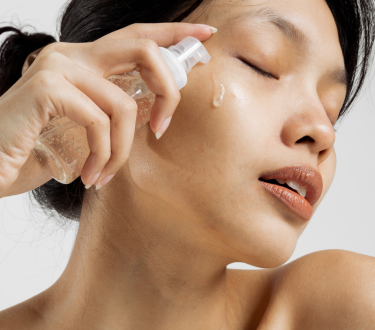
Best Toner for Redness: What to Look For and What to Avoid
Share
Toners have a valuable role in skincare routines. They cleanse residual impurities, balance the skin’s pH, hydrate, and prepare the skin to absorb other products better.
They are designed to help an array of skin concerns (such as dark spots and clogged pores), but there are some that can actually worsen redness and irritation.
This is especially true for those with sensitive skin.
That’s why it’s important to understand which formulations and ingredients are best for redness.
Opting for the right product can mean the difference between calming or inflaming your complexion.
What Causes Redness in Skin?

Redness can be caused by several underlying factors, with the most common triggers being:
- Irritation
- Dryness
- Environmental stressors
- Compromised skin barrier
When the skin lacks moisture or becomes exposed to harsh conditions, it can respond with redness and sensitivity.
The skin barrier normally protects the skin from irritants, but if it is weakened, it can become more susceptible to inflammation.
Using the wrong type of toner can aggravate these conditions.
Toners that have alcohol, fragrances, or strong astringents can strip the skin of its natural oils. This leads to more dryness.
They not only intensify existing redness but can cause further irritation.
Why the Right Toner Matters
The right toner can boost the overall health and appearance of your skin.
Gentle, hydrating, and soothing toners are great for reducing visible redness and irritation.
The ingredients in these formulations can calm the skin, lock in moisture, and relieve facial tightness.
But not all toners are the same.
Using one that’s too harsh can make your problems worse.
In some cases, the wrong toner can cause serious damage to your skin barrier and wreck your skin.
Ingredients to Look for
We mentioned earlier that gentle, hydrating, and soothing ingredients are the best for reducing redness.
We’ve put together some of the most common ingredients with those properties here:
Soothing and Anti-Inflammatory
-
Chamomile
- Calendula
- Colloidal oatmeal
- Centella Asiatica (CICA)
- Aloe vera
- Propolis
- Panthenol
- Allantoin
Hydrating
- Hyaluronic acid
- Glycerin
- Honey
- Sodium PCA
- Squalane
- Lecithin
- Coenzyme Q10
- Thermal spring water
- White leaf tea water
- Great burdock root
Barrier Strengthening
- Ceramides
- Niacinamide
- Fruit extracts (antioxidant benefits)
- Passionflower & edelweiss extracts
- Snail extract
Best Formulations

Gentle, alcohol-free formulas are at the top of the list for best toners for redness. These do their job without further irritating your skin.
Fragrance-free options are also recommended, but if there is a scent, it should be minimal and made to fade quickly.
Those with dryness-prone skin should look for hydrating toners with a milky texture. These are better at delivering moisture.
pH-balancing toners are also great, as they help maintain the skin’s natural acidity, which is important for barrier function.
Barrier-repairing formulas that are rich in antioxidants soothe irritation and protect the skin from environmental damage.
For those who want light exfoliation without the risk of inflammation, some toners combine exfoliants like AHAs with soothing elements like CICA.
Ingredients and Toner Types to Avoid
Alcohol is a common ingredient found in toners that claim to be refreshing or mattifying. It strips away natural oils, weakens the skin barrier, and worsens redness.
Synthetic fragrances are one of the most frequent causes of skin irritation. Even if a toner smells nice, added fragrance can trigger redness, itching, or stinging.
Harsh astringents like undiluted Witch Hazel are also not good for redness. They lead to increased skin sensitivity.
Unless they are also stated to be soothing and contain a good mix of ingredients, you’ll want to avoid toners targeted at oily and acne-prone skin.
Tips for Choosing the Right Toner
Now you have information about the best ingredients and formulations at your disposal.
Here are more tips to help you choose the right toner:
- Read the ingredient list carefully. Look for any of the ingredients listed earlier and avoid alcohol, fragrances, and astringents.
- Always patch tests before use. Apply the toner to a small area of the skin first to check for a reaction.
- Choose products labeled for sensitive skin. These are formulated with gentle, calming ingredients and are less likely to trigger redness.
- Avoid over-exfoliating. Even mild acids like AHAs and BHAs can cause irritation if used too much.
- Keep sensitivity in mind. Choose products that align with your skin tolerance and current condition rather than following trends and marketing.
If you’re still not sure, it’s not a bad idea to consult a dermatologist for an expert opinion on what your skin needs.
Or, you could get started by checking out our detox toner, which is specially made to hydrate and calm your skin.
